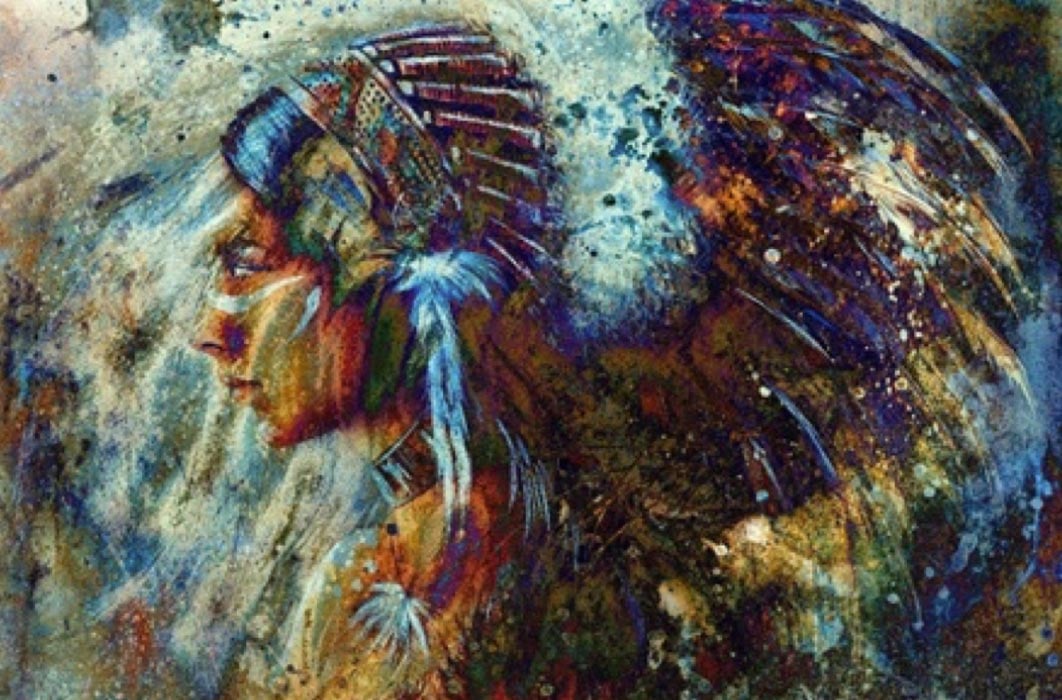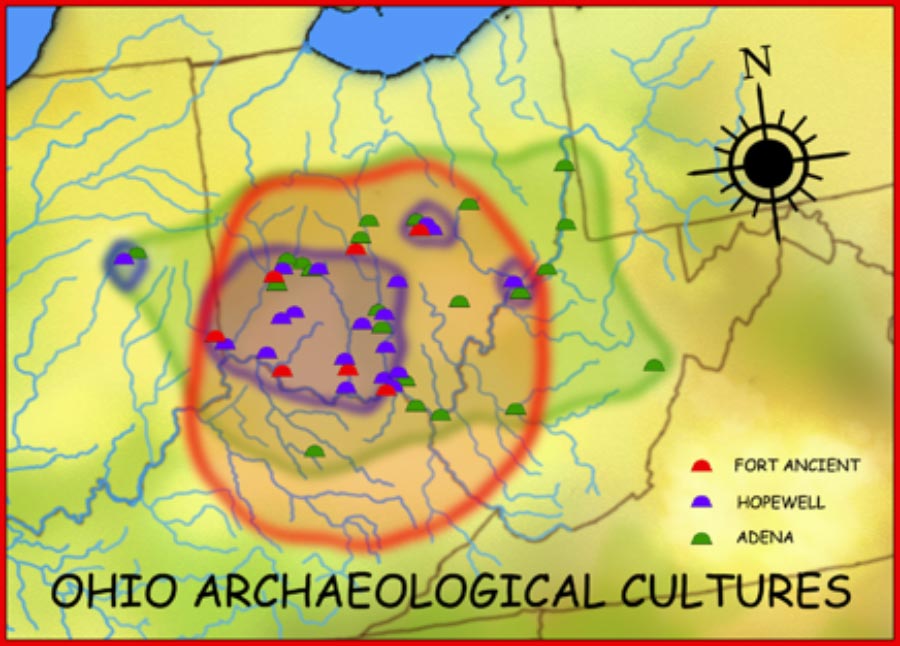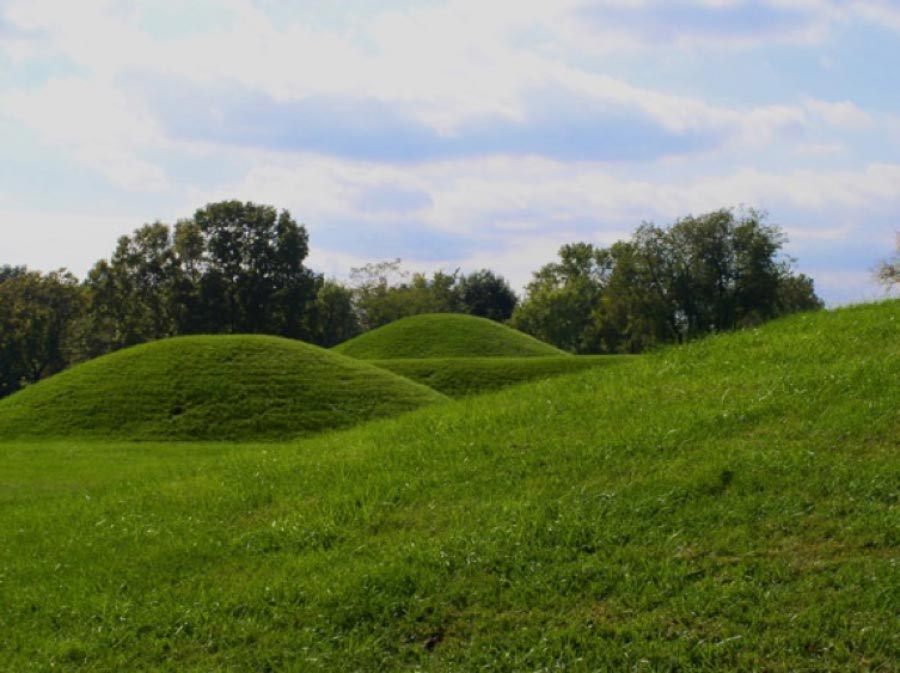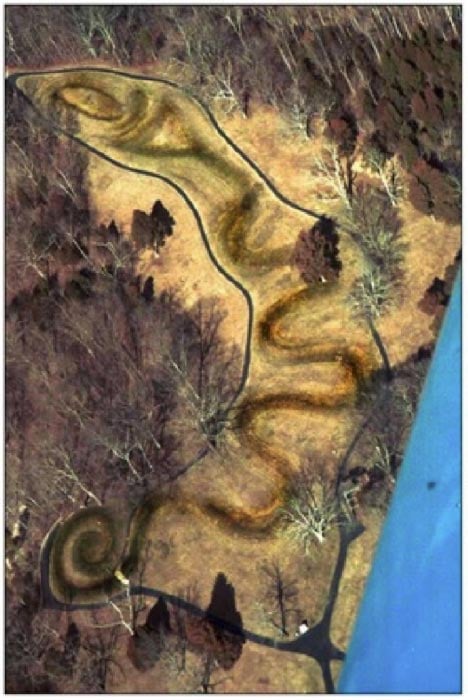
Adena-Hopewell Cosmology, Community, and Identity at the Robbins Mound
The first people to construct widespread burial mounds and earthworks in the Ohio Valley were participants in the Adena Culture, which began around 500 BC and continued until about 300 AD. Sometime around 50 BC, some Adena communities in southern Ohio—under strong influences coming from the lower Illinois Valley—evolved the more exotic and elaborate Ohio Hopewell Culture, which persisted until 400—500 AD. Thus, in the Ohio Valley, there were two contemporaneous mound building cultures for several centuries: Adena and Ohio Hopewell.

Geographic distribution of the Adena (800 BC–100 AD), Hopewell (200 BC–500 AD), and Fort Ancient (1000–1750 AD) cultures. (CC BY-SA 3.0)
Although there were variations and differences of material culture and burial practices, Adena and Hopewell expressed the same cosmological scheme, valued the same exotic power materials, and gathered to build large mounds and earthworks according to similar patterns of dispersion and coalescence. Also, it is now recognized that Adena and Hopewell groups even engaged in the co-operative construction of large scale ritual landscapes which not only shared common patterns of astronomical alignments, but also employed the same measurement unit. For these reasons and others, some archaeologists have come to simply refer to both cultures as Adena-Hopewell.

Hopewell mounds from the Mound City Group in Ohio (Heironymous Rowe/CC BY-SA 3.0)
Cosmology and Social Structure
Archaeologists have established that the cosmology expressed in Adena-Hopewell earthworks and artifacts correspond to that of the tribes who inhabited the Eastern Woodlands at the time of historic European contact. In this cosmological scheme, the cosmos is divided into three interconnected worlds: the Above World occupying the sky and heavens, the Earth World, and a watery Underworld beneath the Earth World. The Above World is the realm of the stars, the sun and moon, and the mythic Thunderbirds. It is also the location of the Milky Way galaxy, considered by many Native American tribes to be a ‘Path’ or cosmic ‘River’ which the souls of the departed must navigate to reach the entrance to the Land of the Dead. The Earth World is basically the sensible terrestrial world of living humans, plants, and animals, and is envisioned as a flat disk or island floating on a surrounding primordial sea. The Underworld is a water filled subterranean realm of aquatic creatures as well as malignant supernatural forces under the dominion of an entity alternately described as a gigantic horned serpent or as a hybrid of dragon, feline and serpentine characteristics known as the ‘Underwater Panther’. All worldly water sources—rivers, lakes, oceans, and natural springs—are believed to be passages between the Earth Disk and the Underworld. The inhabitants of the Above World and Underworld are engaged in an endless and eternal war, which unfolds on the Earth Disk, and both sides interact with humanity for good or ill.

Great Serpent Mound, Ohio, constructed ca. 1070 (CC BY-SA 2.5)
Adena and Hopewell mounds are believed to have served as symbolic representations of an Axis Mundi—a sacred tree or holy mountain—which united the three worlds of the Woodland cosmos. By burying their dead within the Axis Mundi, Adena-Hopewell practitioners may have sought to manipulate the journey of the souls of the deceased so that they entered the ‘Path of Souls’—the Milky Way Galaxy in the Above World—and followed it to the entrance of the Land of the Dead. While some early 20th-century archaeologists compared Adena societies to chiefdoms, the current understanding is that Adena social organization was modeled on the concept of heterarchy. In heterarchical societies, important social roles are only activated on a situational basis, and those who hold influence or power only do so for a limited time. Once the situation requiring their talents is finished, heterarchical leaders cease to hold lasting influence over their communities. The leaders and inventors of Adena burial rites thus operated in a decentralized system that allowed considerable freedom in how the underlying cosmology was interpreted at burial mounds and earthworks. The current thinking completely dispenses with the outmoded idea that Middle Ohio Valley Adena groups were ruled by a permanent elite or generational chiefdoms, a type of political system which did not emerge in the Eastern Woodlands until around 900 AD with the rise of the Mississippian culture.




